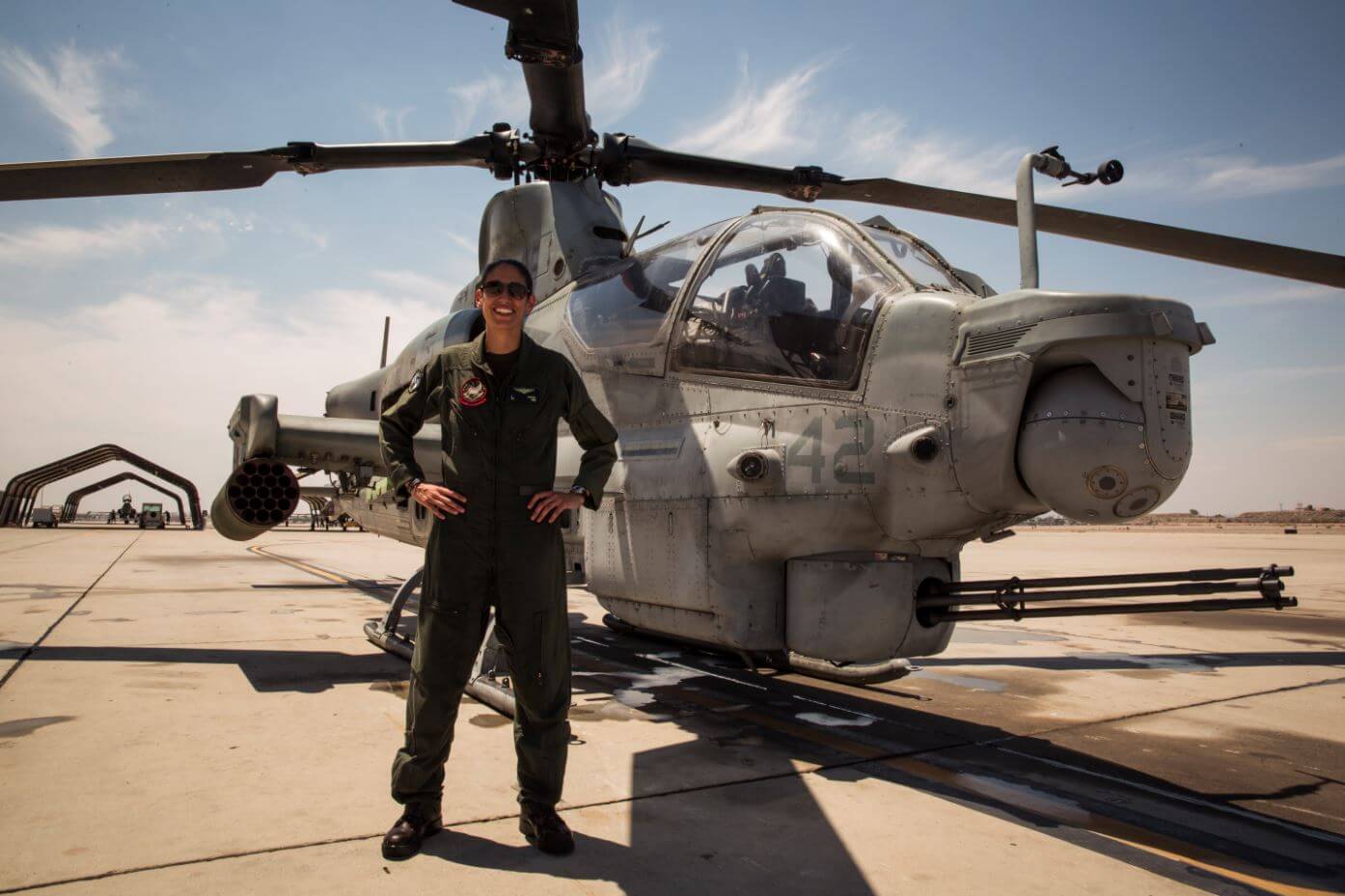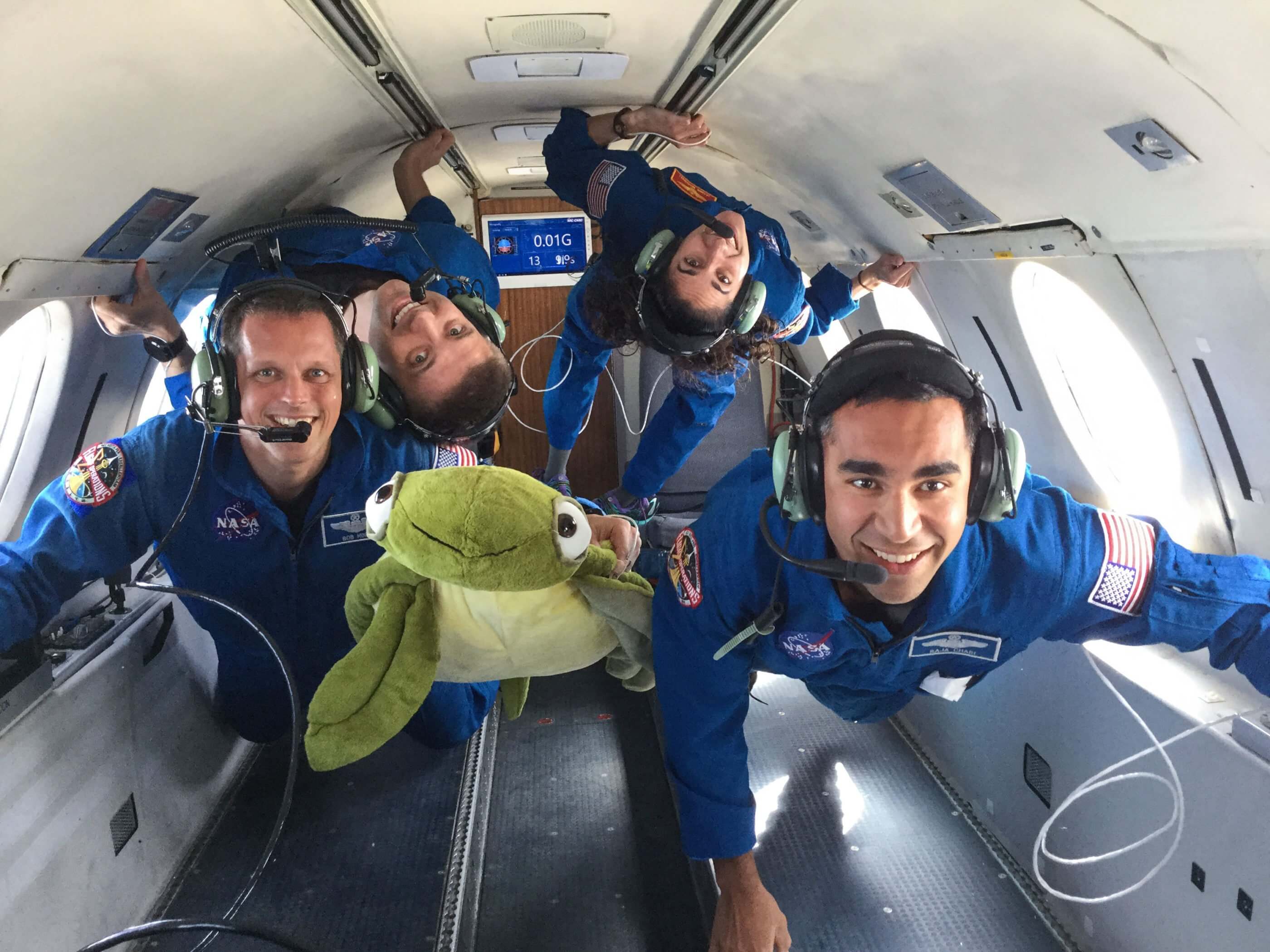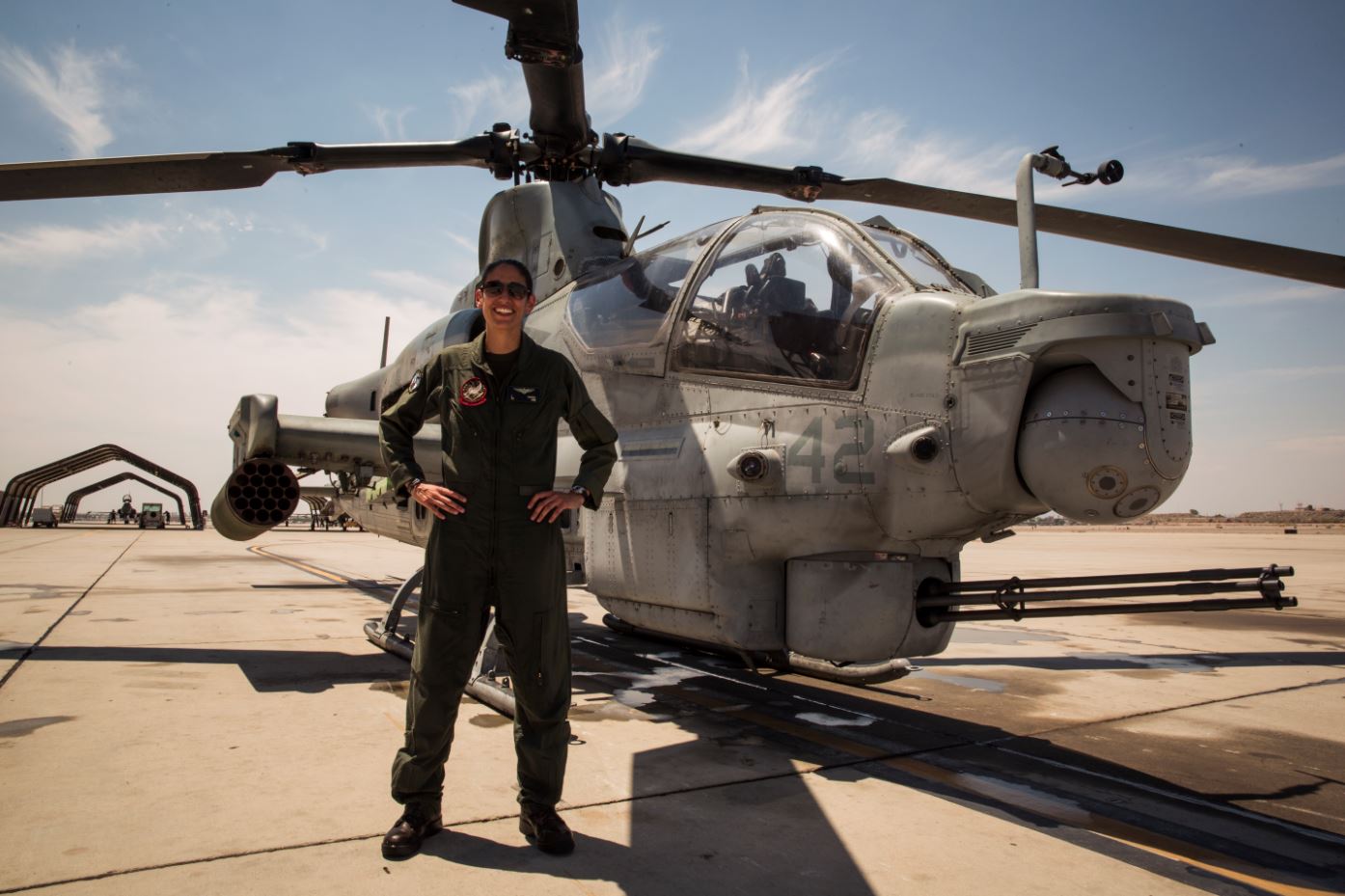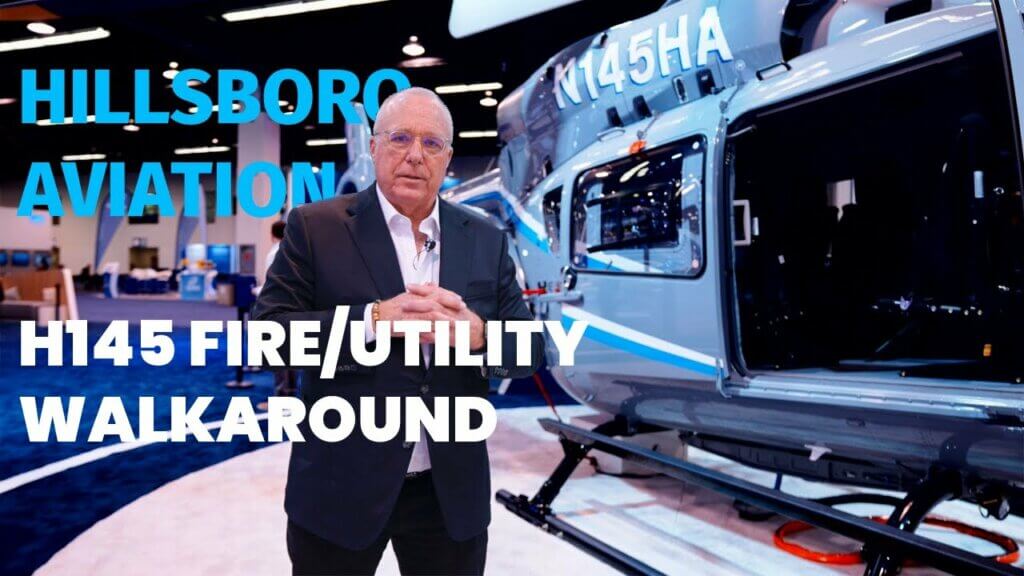Maj Jasmin Moghbeli has flown more than 25 types of aircraft in her career as a U.S. Marine Corps aviator and test pilot, including the Bell H-1 Cobra helicopters she flew on deployments to Afghanistan, the Middle East, and Japan. But one of the most challenging things she has learned how to pilot isn’t obviously an aircraft at all. Rather, it’s NASA’s Extravehicular Mobility Unit (EMU) — more commonly known as a spacesuit.

“You can’t imagine what it’s like to be in that spacesuit until you get in there and do it, because astronauts do these spacewalks and they make it look so easy,” she told Vertical on Jan. 10, the day she graduated with NASA’s newest class of astronauts. “But when you actually get in there, you’re in your own little spacecraft, and you have to learn how to work within that and not fight it.”
To learn how to spacewalk, Moghbeli and her classmates donned EMUs and went underwater in the Neutral Buoyancy Laboratory at NASA Johnson Space Center in Houston. This massive pool — nearly 10 times the volume of an Olympic-size swimming pool — contains a mock-up of the International Space Station, allowing astronauts to practice spacewalk tasks in Earth’s best approximation of zero gravity. This was by far the most challenging part of her two-year astronaut training, Moghbeli said, but her background as a pilot held her in good stead.
“There’s a lot of stuff that [is] similar to when you’re learning an aircraft and learning a system,” she explained. “Just like an aircraft, you want to know what you’re operating [with] so that when you have those contingencies, you have that muscle memory and you know the system well enough to make smart decisions in that moment.”

Moghbeli is one of two helicopter pilots in the graduating class of 11 NASA and two Canadian Space Agency (CSA) astronauts, nicknamed the “Turtles.” The other is Dr. Frank Rubio, a U.S. Army lieutenant colonel and surgeon who has logged more than 1,100 hours as a Black Hawk pilot. There are also four other test pilots in the class: NASA astronauts Raja Chari, Matthew Dominick, and Bob Hines, and CSA astronaut Joshua Kutryk.
Moghbeli grew up in Baldwin, New York, and earned a bachelor’s degree in aerospace engineering with information technology from the Massachusetts Institute of Technology. She was a commissioned as a second lieutenant in the U.S. Marine Corps in 2005, and completed flight training at Naval Air Station (NAS) Pensacola, Florida, in 2008. She was then selected to fly the AH-1W Super Cobra helicopter, her top choice.
She began her operational flying career with Marine Light Attack Helicopter Squadron (HMLA) 367 Scarface at Marine Corps Air Station (MCAS) Camp Pendleton, California, deploying with the squadron to Afghanistan from 2009 to 2010. She was then attached to Marine Medium Helicopter Squadron (HMM) 163 Reinforced (REIN) at MCAS Miramar, California, and deployed in support of the 13th Marine Expeditionary Unit (MEU) in 2011. Subsequently reassigned to HMLA-367, she completed her third deployment with HMM-262 (REIN) in support of the 31st MEU in 2012.
“The astronaut program was something I was interested in for a long time, since I was a kid,” she recalled. “It kind of had been pushed to the back of my mind while I was flying Cobras. But [as] my first tour was coming to a close, it came back into my mind, and that’s when I applied to test pilot school.”

Moghbeli proceeded straight from her third deployment to the Naval Test Pilot School in NAS Patuxent River, Maryland, where she received the Commander Willie McCool Outstanding Student Award as the Class 144 honor graduate. She then completed a conversion syllabus to the AH-1Z Viper and UH-1Y Venom before beginning her developmental test tour in 2014 with Air Test and Evaluation Squadron (VX) 31 at NAS China Lake, California. There, she conducted flight testing of several weapons systems, a ground proximity warning system, software upgrades, and an electronic warfare pod, while also pursuing her master’s degree in aerospace engineering from the Naval Postgraduate School.
In 2017, Moghbeli reported to MCAS Yuma, Arizona, to join Marine Operational Test and Evaluation Squadron (VMX) 22, subsequently helping to stand up VMX-1. When she was selected for astronaut training from a pool of more than 18,000 applicants in June 2017, she was testing H-1 helicopters and serving as the quality assurance and avionics officer for VMX-1, having accumulated more than 2,000 hours of flight time.
Although Moghbeli was able to draw on her aviation experience for many aspects of astronaut training, some subjects, such as geology, were entirely new to her. “Training has been really exciting, because you do so many different things, and so many things you’ve never done before,” she said. “We fly T-38 jets, we learn robotics, we learn Russian, we learn how to spacewalk. . . . We do some medical training, biomedical training, and so there’s just a little bit of everything.”
Here, the Turtles benefited from the remarkable diversity of their class, which includes not only pilots but also specialists in geology, biology, oceanography, and more.

“That diversity of experience and backgrounds adds so much value,” Moghbeli said. “We need to be able to do a little bit of everything in space, and so we train to do many different things. And just about for everything we do, we have someone who [is] an expert in that. So then it’s that person’s chance to really shine and bring the rest of the team up to their level.”
Moghbeli hasn’t been able to log much helicopter time since joining the astronaut program two years ago, but she’s still thinking about vertical takeoffs and landings in the context of the Human Landing System, which will be NASA’s next lunar lander. It is part of the recently announced Artemis program, which aims to send the first woman and the next man to the surface of the moon by 2024. Additional lunar missions are planned once a year thereafter as NASA works toward human exploration of Mars in the mid-2030s.
“There are a lot of different space vehicles on the horizon right now, so that’s very exciting,” Moghbeli pointed out. As for the Turtles’ next steps, she said, “I think we are all just looking forward to getting [into] space someday, and in the meantime working towards that every day.”









